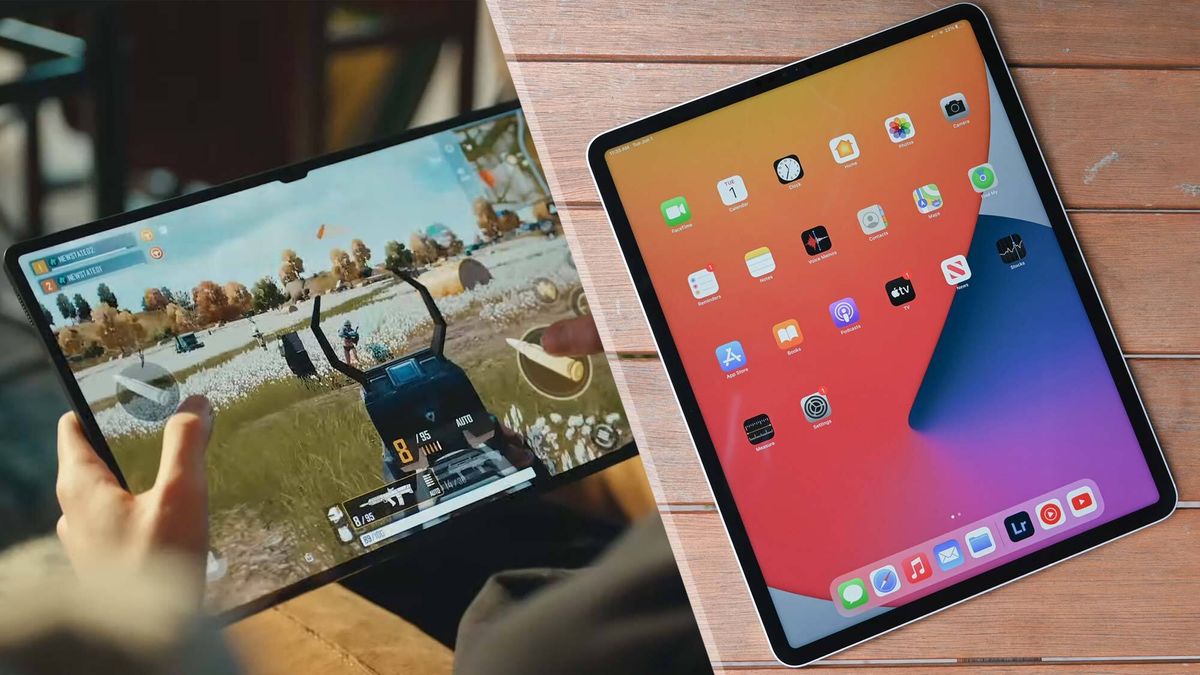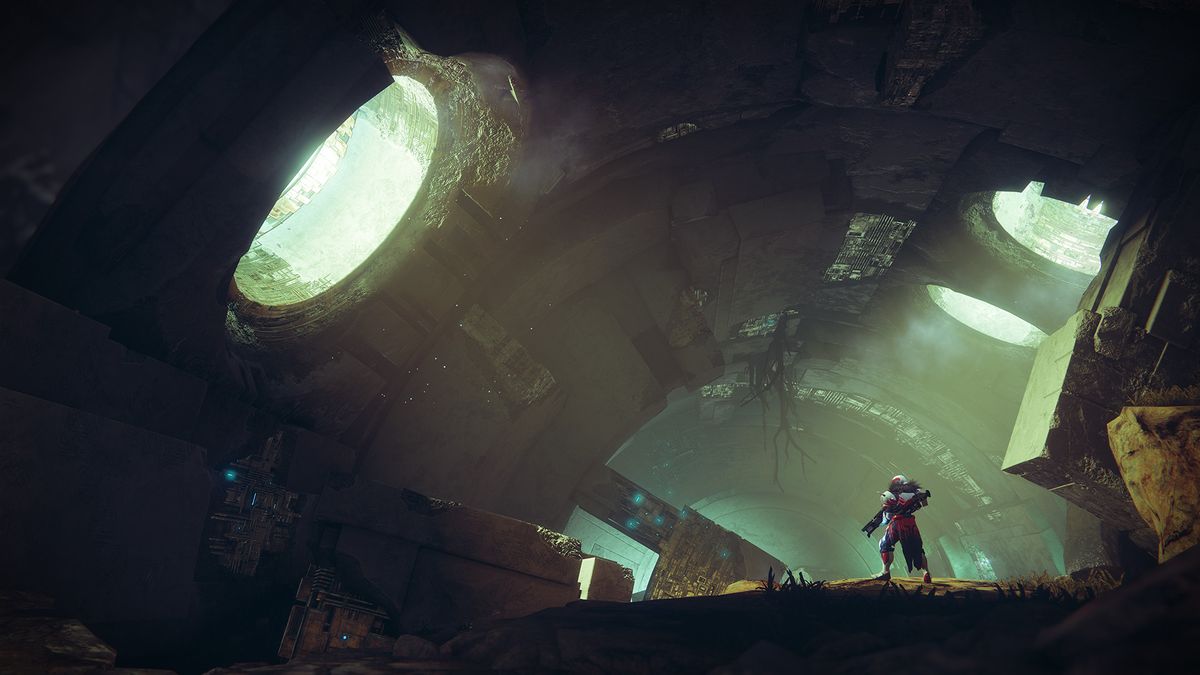It’s war! Samsung unleashed its new stalwart slate soldier, the Galaxy Tab S8 Ultra, to topple the golden tablet throne that the iPad Pro currently occupies. However, Apple won’t give up its dominion that easily.
Last year, the 12.4-inch Galaxy Tab S7+ was the 12.9-inch iPad Pro’s sole worthy competitor. They fought to the death in our tablet face-off, but unfortunately, Samsung took the L. Despite the Tab S7+’s gorgeous display and smooth-as-silk S Pen, the iPad Pro’s 11-hour battery life and zippy performance stole the show.
Now, Samsung has a new cowboy in town — the Korean-based tech giant added a new Ultra model to its Galaxy Tab S series. It’s bigger, badder and meaner with a gigantic 14.6-inch display, a solid armor aluminum chassis, an enhanced stylus, and more.
Is the iPad Pro shaking in its boots? Not yet. The Apple tablet, equipped with its lightning-fast, high-powered M1 chip, is confident it can take on Samsung’s newest tough guy. However, you never know — the Galaxy Tab S8 Ultra has enough muscle to possibly pull an upset. Read on to find out which premium tablet snags the championship belt.
Galaxy Tab S8 Ultra vs. iPad Pro (12.9-inch): Specs
| Samsung Galaxy Tab S8 Ultra | iPad Pro 2021 (12.9-inch) | |
| Price | $1,099 | $1,099 |
| CPU | Qualcomm Snapdragon 8 Gen 1 | M1 |
| Display | 14.6-inch (SUPER AMOLED), 2960 x 1848 pixels | 12.9-inch (mini LED), 2732 x 2048 pixels |
| RAM | 8GB, 12GB, 16GB | 8GB, 16GB |
| Storage | 128GB, 256GB, 512GB | 128GB, 256GB, 512GB, 1TB, 2TB |
| Battery | N/A | 10:48 |
| Weight | 1.3 pounds | 1.5 pounds |
| Size | 12.9 x 8.2 x 0.22 inches | 11 x 8.5 x 0.25 inches |
Galaxy Tab S8 Ultra vs. iPad Pro: Price and value
You may need to sell your kidney — or your first-born child — to snag either the Galaxy Tab S8 Ultra or iPad Pro, but the portable, premium perks will make it worth the painful expense. Both slates have a starting price of $1,100.
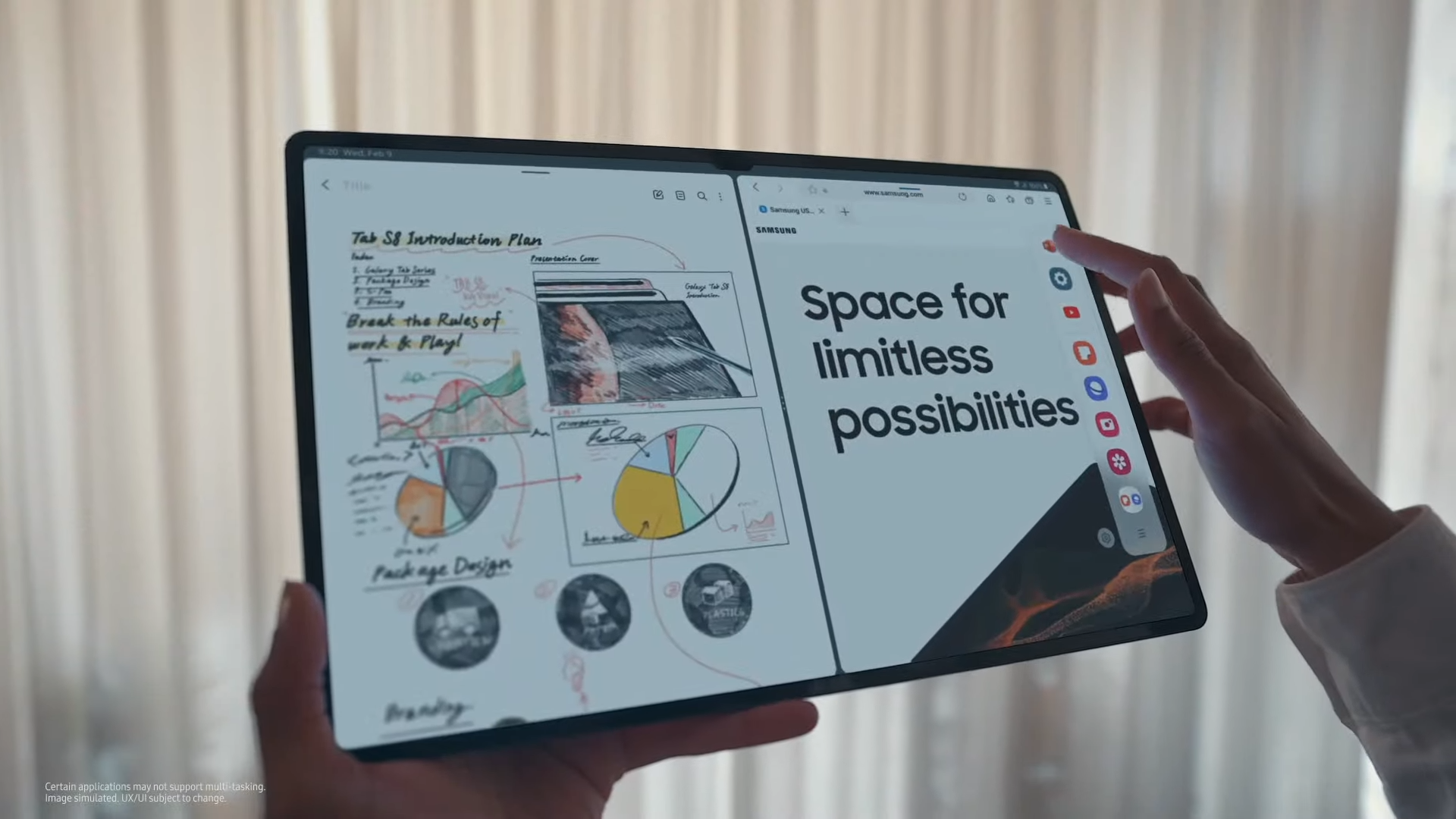
The entry-level, 14.6-inch Galaxy Tab S8 Ultra comes with a 4-nanometer, octa-core chip, 8GB of RAM and 128GB of storage. If you need more RAM, pony up an extra $100 to get 12GB of RAM and 256GB of storage. A maxed-out Galaxy Tab S8 Ultra costs a whopping $1,400 and comes with 16GB of RAM and 512GB of storage. You can add an extra 1TB of storage with a microSD card.
Now, let’s take a look at the 12.9-inch iPad Pro. Its entry-level, Wi-Fi model comes with 8GB of RAM and 128GB of storage. To double your storage capacity (256GB), you’ll have to shell out an extra $100. If you need more RAM, there’s a configuration with 16GB of memory and 1TB of storage for $1,800. If you’re feeling opulent, snag the $2,200 model; it comes with 16GB of RAM and 2TB of storage. By the way, if you need a cellular-enabled device with 5G support, you must add an extra $200 to the aforementioned configurations — whew!
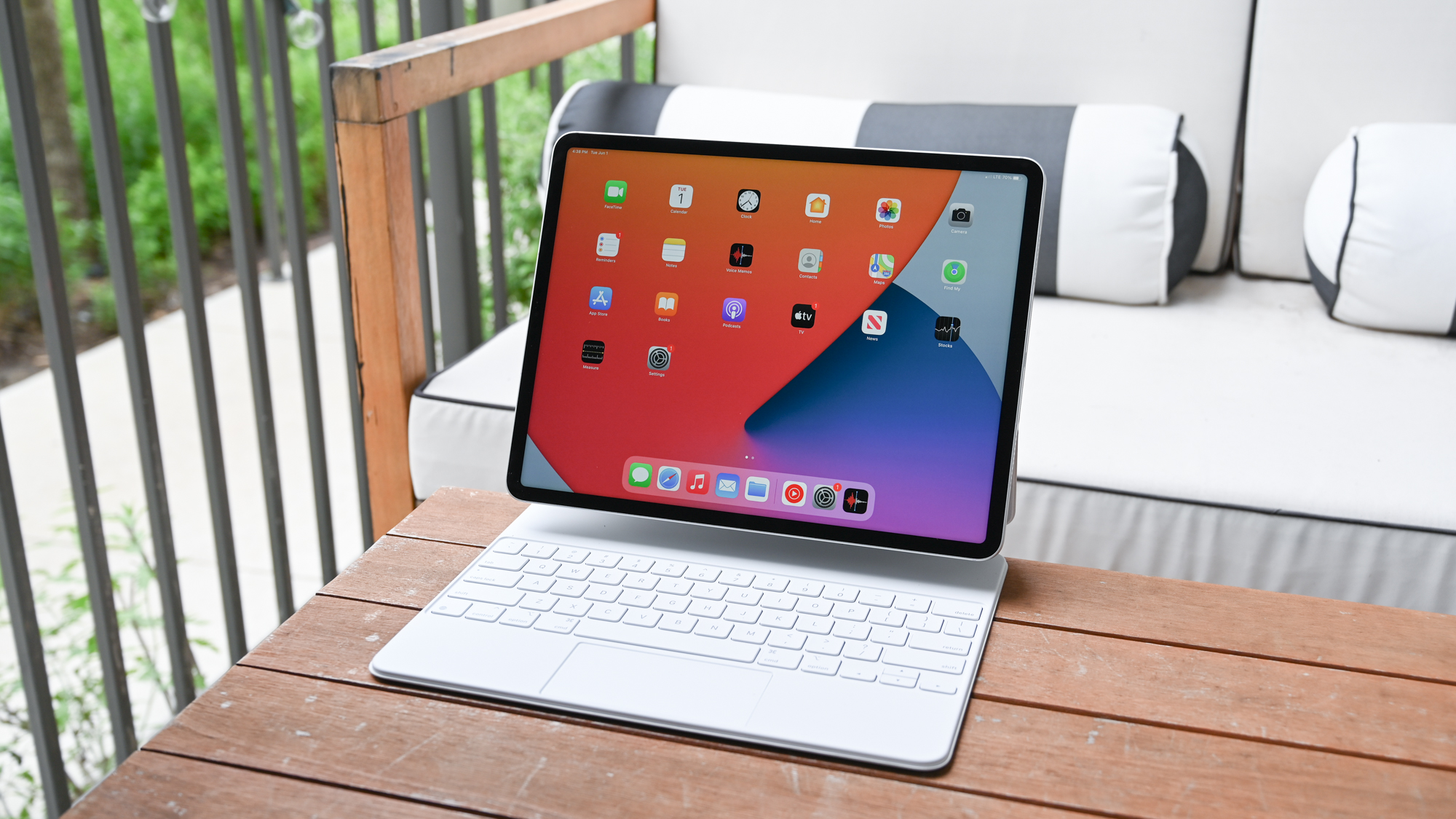
Keep in mind that if you need a keyboard, trackpad and stylus to accompany the iPad Pro, you’ll need to spend even more. The Galaxy Tab S8 Ultra ships with the S Pen, and as of this writing, Samsung is offering a complimentary keyboard cover with the giant tablet as a pre-order bonus.
You can pre-order the Galaxy Tab S8 Ultra now, but it officially launches on Feb. 25.
Winner: Galaxy Tab S8 Ultra
Galaxy Tab S8 Ultra vs. iPad Pro: Design
Yawn! Neither tablet features any striking, noteworthy designs. Both offer ho-hum shades of gray. The Galaxy Tab S8 Ultra only comes in graphite. Apple, on the other hand, offers two — erm — oh-so-exciting hues: Space Gray and Silver. Yay, so much variety (yes, that was sarcasm).
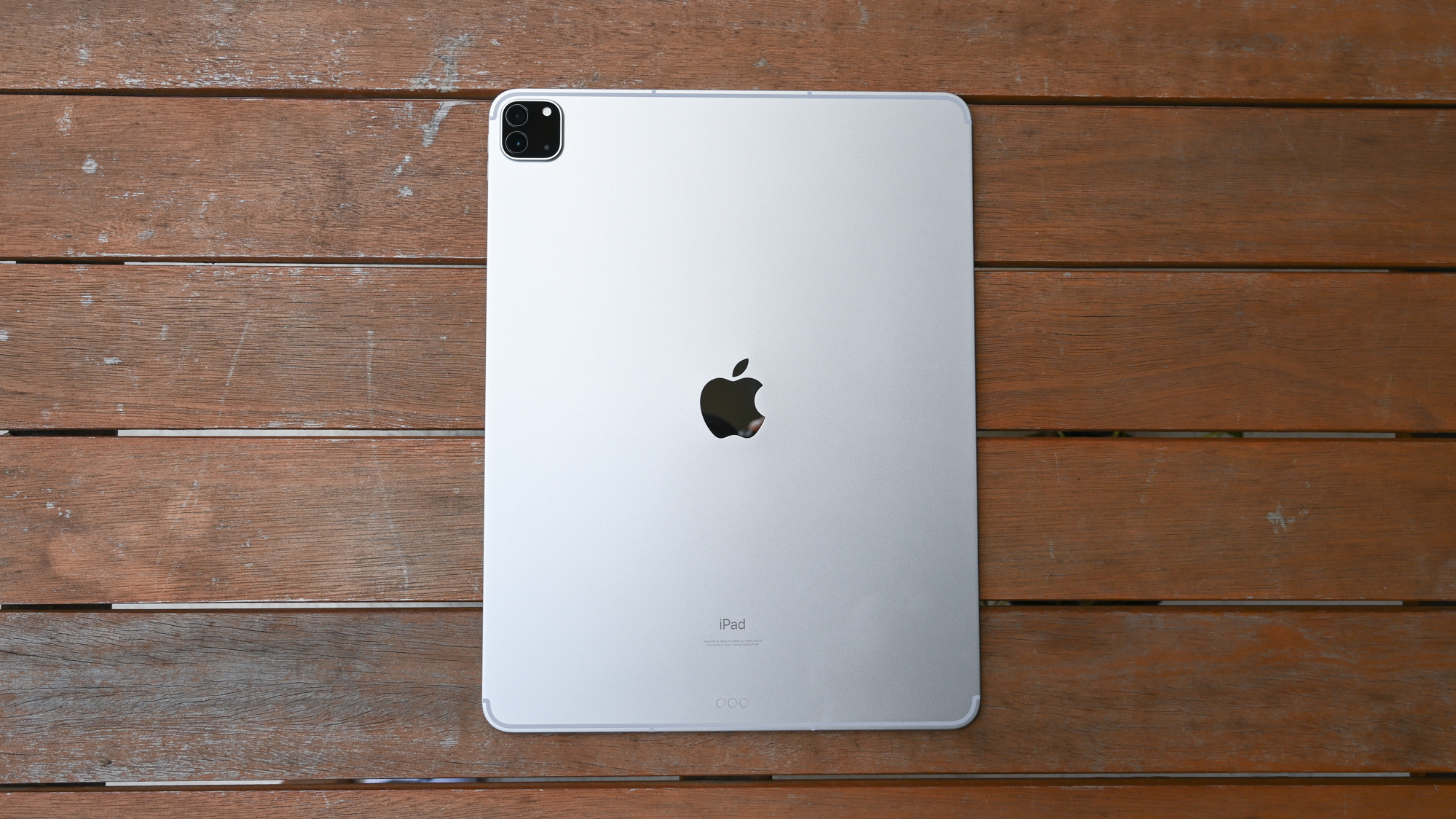
The iPad Pro has a sleek, flat-edge design. Apple’s well-recognized, fruity logo is centered on the iPad Pro’s robust aluminum backside. On the top-left corner, you’ll find a squircle camera module housing dual lenses stacked on top of each other. You’ll find another camera on the front. The bezels that embrace the iPad Pro’s display are slim, but the frame that surrounds the Galaxy Tab S8 Ultra’s 14.6-inch panel is slightly thinner.
The Galaxy Tab S8 Ultra, like its Apple rival, doesn’t deviate much from its predecessors in terms of design. Its backside comes with a magnetic strip for charging the S Pen. Next to it is an oblong camera module with two lenses. On the front, you’ll find a design quirk that you’d expect on an Apple product: an eye-catching notch that dips into the display ever-so-slightly. It houses two front-facing cameras, a mic and a light sensor. Samsung said that the Galaxy Tab S8 Ultra consists of a material it calls “armor aluminum.” It’s reportedly 30% more scratch resistant and 40% less prone to bending (compared to the Galaxy Tab S7 line).
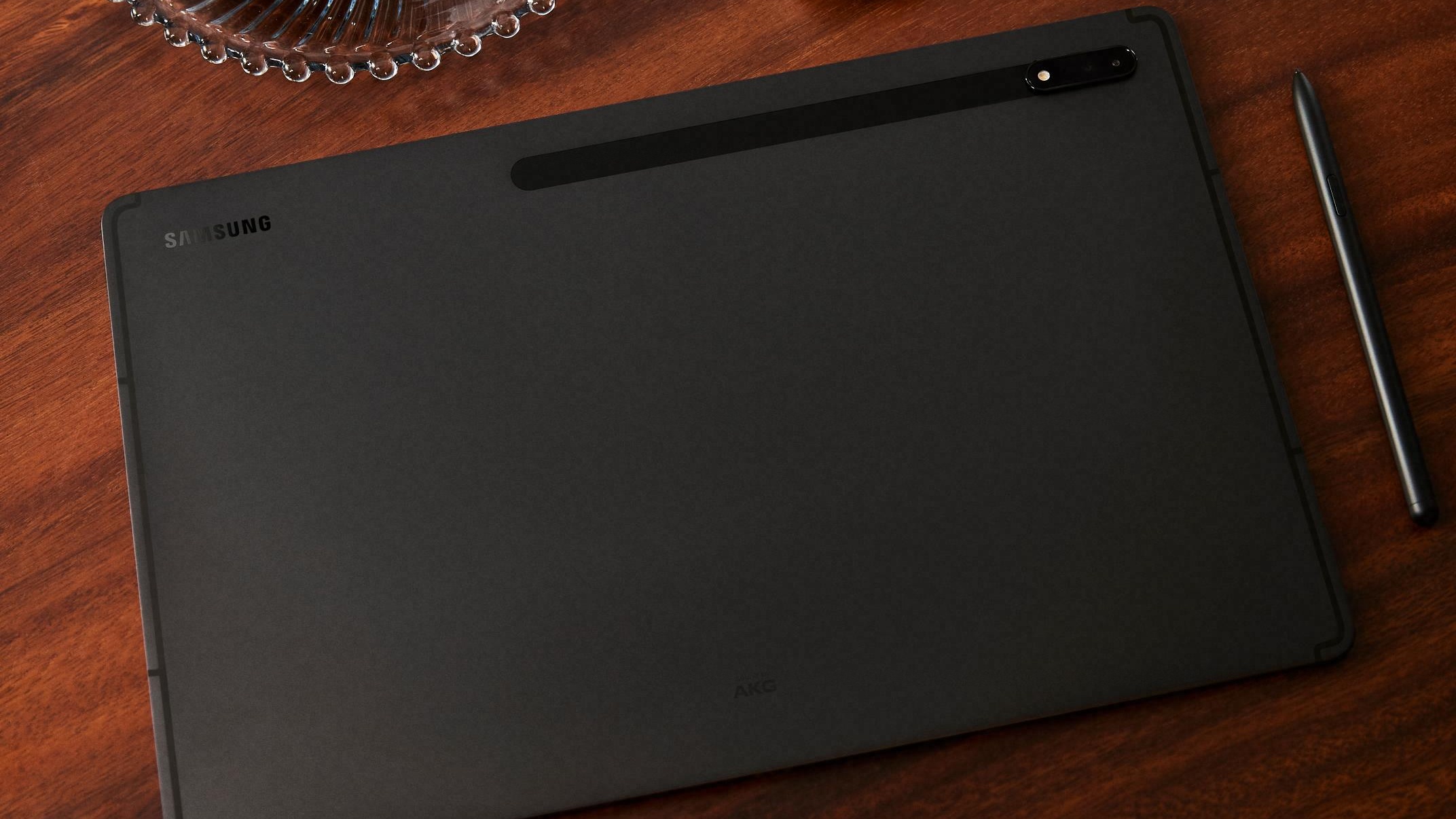
Despite the Galaxy Tab S8 Ultra’s gigantic form factor, it somehow manages to be lighter and thinner than the iPad Pro. The Ultra is 0.22 inches thick and weighs 1.4 pounds. Conversely, the iPad Pro is 0.25 inches thick and weighs 1.5 pounds.
Winner: Galaxy Tab S8 Ultra
Galaxy Tab S8 Ultra vs. iPad Pro: Ports
The Galaxy Tab S8 Ultra features a fast-charging USB 3.2 Type-C port, which also delivers DisplayPort out. The iPad Pro also has a single USB-C charging port with Thunderbolt 4 support. Neither tablet has a headphone jack, so you’ll have to make do with USB-C or wireless headphones.
Winner: iPad Pro
Galaxy Tab S8 Ultra vs. iPad Pro: Display
The Galaxy Tab S8 Ultra has an edge over the iPad Pro when it comes to its display real estate. It has a spacious 14.6-inch, 2960 x 1848-pixel panel enveloped inside ultra-slim bezels (6mm). The iPad Pro’s bezels are slightly thicker (6.4mm), but not by much. We haven’t gotten a chance to feast our eyes on the Galaxy Tab S8 Ultra’s Super AMOLED display yet, but the Galaxy Tab S7+’s panel, featuring the same technology, blew us away with its rich blacks and vibrant colors.
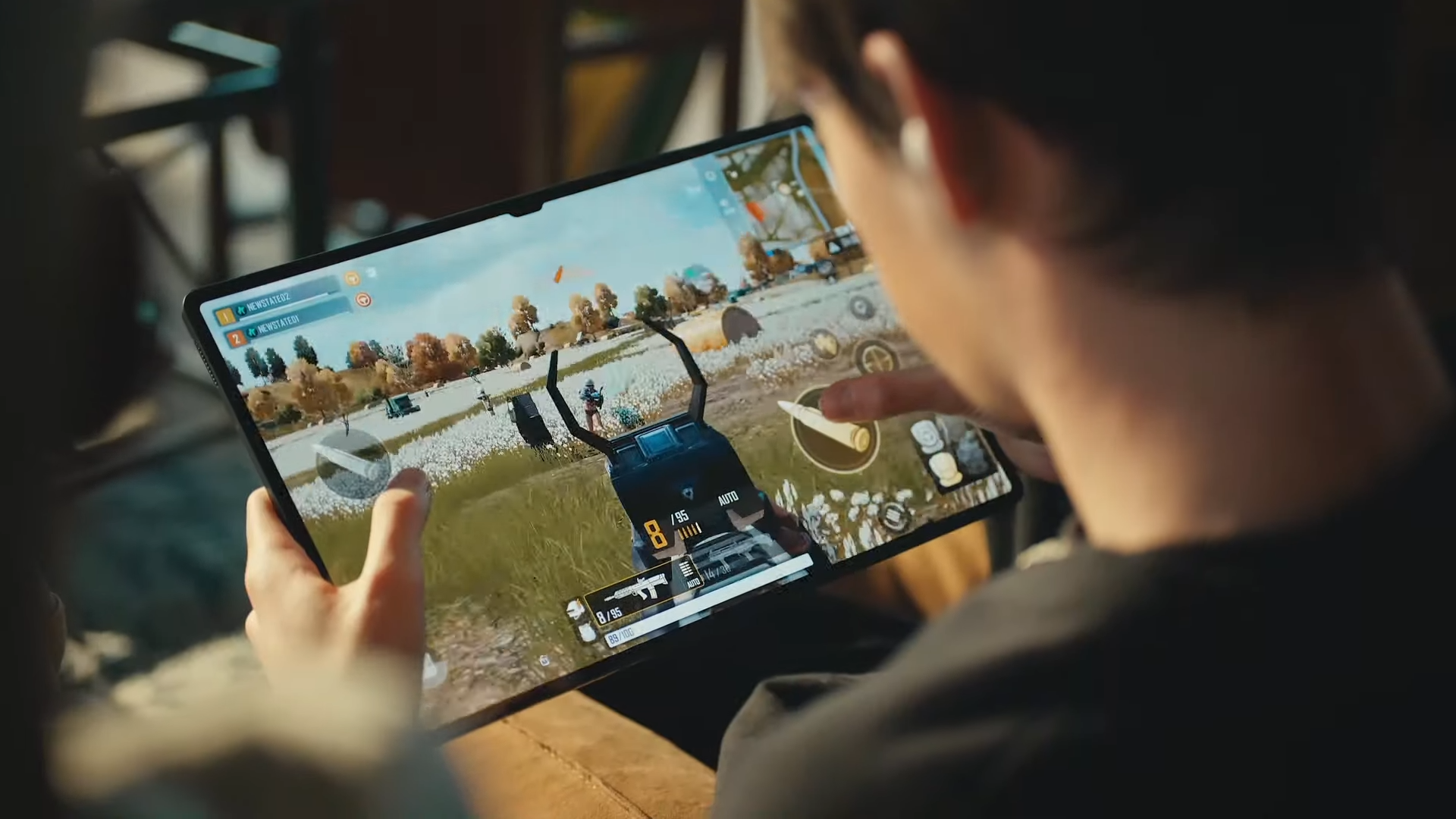
When we experimented with the iPad Pro’s 12.9-inch, 2732 x 2048-pixel, mini-LED display last year, we adored its bright, colorful Liquid Retina XDR panel, especially when we watched high dynamic range (HDR) content. OLED may have mini-LED beat when it comes to black levels, contrast and motion performance, but mini-LED takes the throne when it comes to brightness, HDR video playback and durability.
Unfortunately, some iPad Pro users pointed out that the tablet suffers from a display quirk called “blooming,” which is when bright pixels seemingly bleed into darker areas, causing a glowy effect.
Apple acknowledged this peculiarity in a support document: “… [T]he extreme brightness of LEDs might cause a slight blooming effect because the LED zones are larger than the LCD pixel size,” the Cupertino-based tech giant said. It’s a foible that’s only conspicuous while viewing high-contrast content (e.g. white letters on a black background) or when users are sitting in a dark room. But in my opinion, it’s not a big enough deal to write off the iPad Pro.
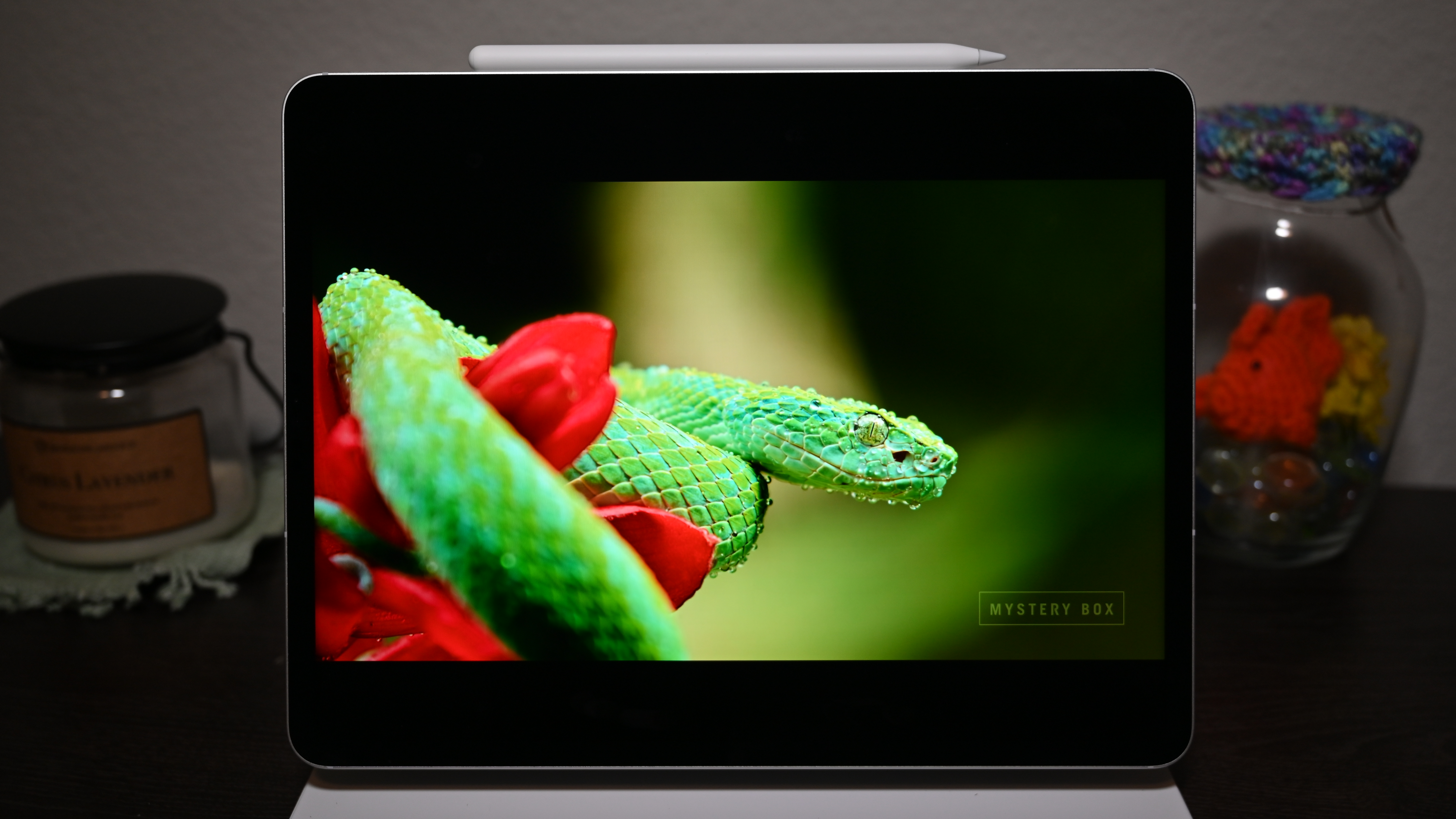
On the plus side, the iPad Pro screen features ProMotion, allowing the display to climb up to a 120Hz refresh rate. This technology lets the panel adapt to your workflow. When the situation calls for it (e.g. gaming), the display will climb to 120Hz, but if your activity is less intensive (e.g. periodically scrolling through an article), the refresh rate will drop. This is ideal for preserving battery life. The Galaxy Tab S8 Ultra offers a refresh rate of 120Hz, too, but it’s not adaptive, so this option will consume a lot of power while you’re on the go.
On paper, the iPad Pro wins by a hair due to its higher-resolution panel and adaptive refresh-rate display, but once we put the Galaxy Tab S8 Ultra’s screen through our traditional tests, we’ll get better insight on which panel is best.
Winner: iPad Pro
Galaxy Tab S8 Ultra vs. iPad Pro: Performance
We haven’t had the opportunity to test the octa-core, 4-nanometer Qualcomm Snapdragon 8 Gen 1 chip inside the Galaxy Tab S8 Ultra yet, but Samsung claims that it’s the fastest processor it’s ever placed inside a Galaxy Tab device. We don’t have benchmark results (stay tuned for updates), but there’s no way in hell that it could possibly outperform the iPad Pro’s beastly M1 chip.
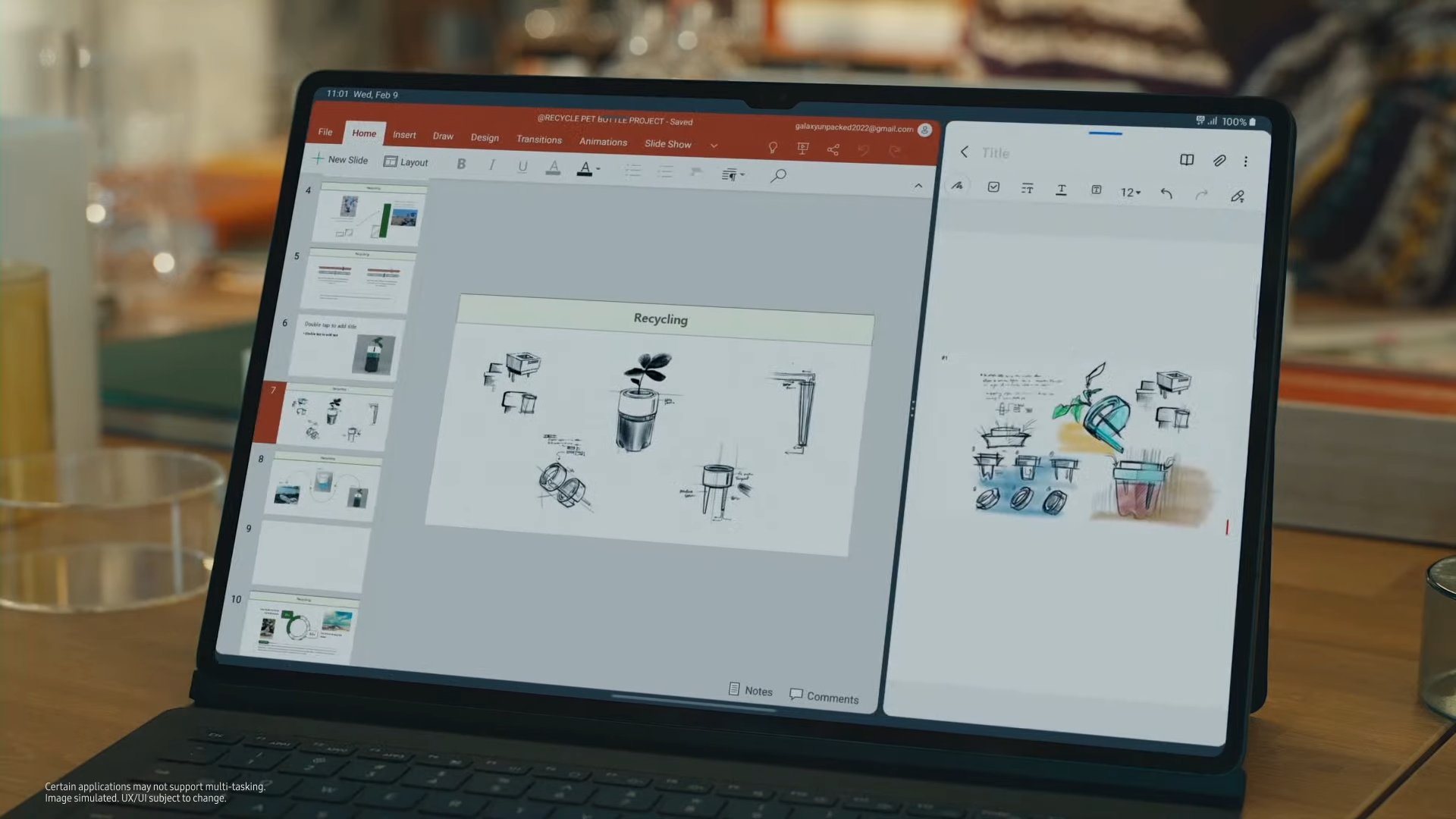
As such, Apple keeps pushing the narrative that the iPad Pro is damn-near a MacBook replacement because its powerful processor can handle intensive workflows without batting an eye. This may be true for those who don’t need Mac-only apps such as InDesign, but if you’re a creative professional reliant on full-featured Adobe platforms (e.g. Photoshop and Lightroom), the iPad Pro may not be sufficient due to its scaled-back app offerings.
The iPad Pro likely crushes the Galaxy Tab S8 Ultra due to the M1’s savage processing prowess, but that doesn’t mean that the Android tablet titan doesn’t offer excellent performance. In fact, if you ask me, the M1 chip is overkill for iPadOS. If Samsung’s assertions about its fastest-ever chip is accurate, you’ll have no issues completing most tasks on the Galaxy Tab S8 Ultra.
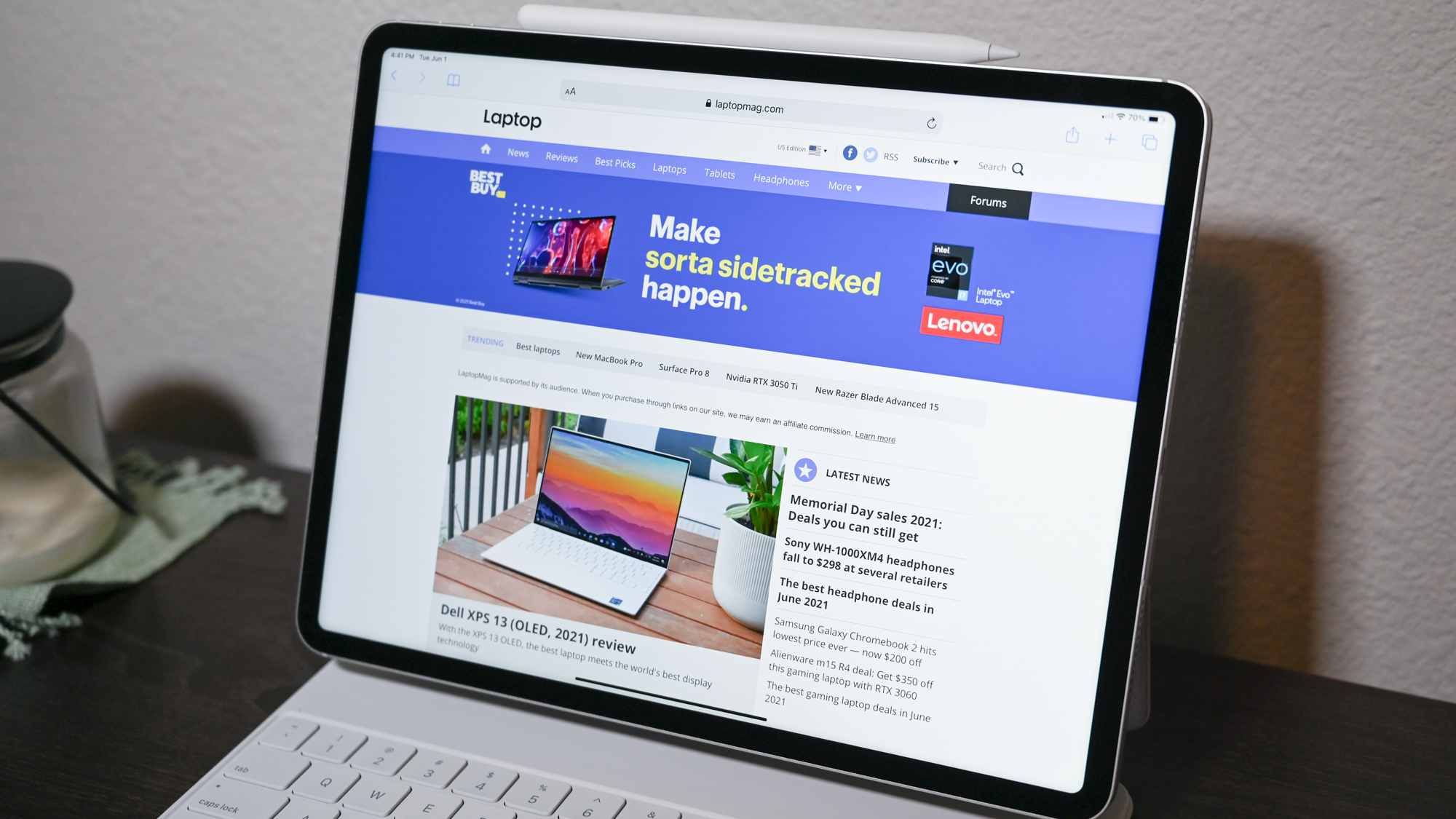
My sole concern about the iPad Pro are the reports of RAM caps on iPadOS apps. In other words, it doesn’t matter if you get a configuration with 8GB of memory or 16GB of RAM; all third-party apps are subjected to RAM caps. In the past, the RAM cap was 5GB, but Apple recently increased the limit to 12GB of RAM for models configured with 16GB of RAM (for variants with 8GB of RAM, developers can request up to 6GB of memory).
Winner: iPad Pro
Galaxy Tab S8 Ultra vs. iPad Pro: Keyboard and stylus
Apple is stingy when it comes to its stylus (the Apple Pencil); you won’t find it accompanying the iPad Pro when you take it out of the box. It’s sold separately and you’ll have to shell out $130 for it. The Galaxy Tab S8 Ultra, on the other hand, comes with the highly praised S Pen. The Apple Pencil has a prism-esque form factor with a blunt, conical point. It’s thicker than the Galaxy Tab S8 Ultra’s S Pen and can charge inductively atop the iPad Pro.
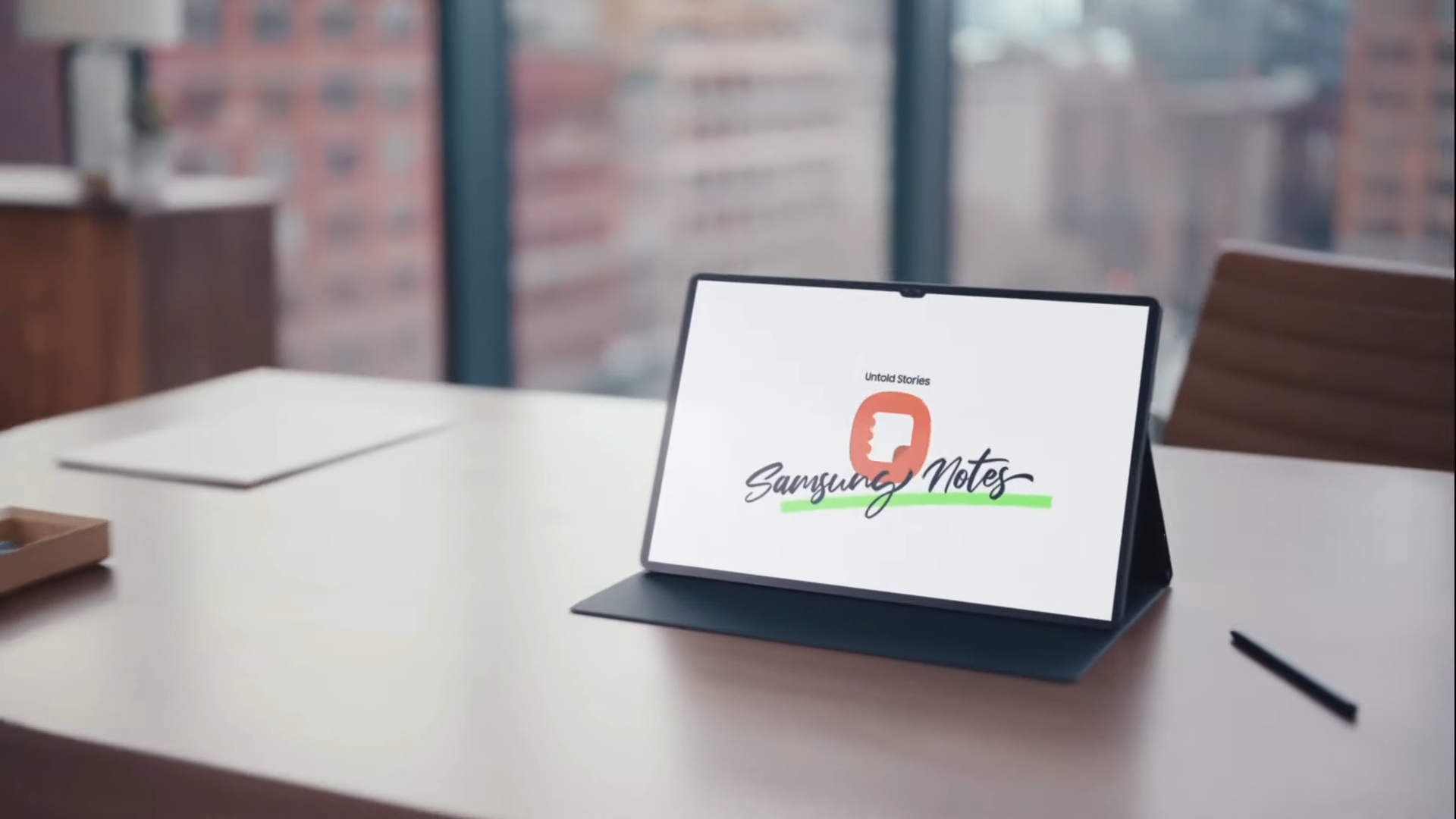
The S Pen, which accompanies the Ultra in the box, can also sit on top of the Galaxy Tab S8 Ultra magnetically, but if you need to charge it, you must place it on the tablet’s backside. Like its name suggests, it’s as sleek as a ballpoint pen. The S Pen has a narrower tip, which is better suited for artistic projects that require high precision. By the way, Samsung announced that LumaFusion’s premier editing tool is coming soon to Galaxy; the app will allow mobile content creators to make precise edits on 4K videos.
Whether you choose Apple or Samsung, you’re in good hands. Both styli support pressure sensitivity and tilt functionality.

For a PC-like experience, you’ll need the Book Cover Keyboard for the Galaxy Tab S8 Ultra, which costs a whopping $349.99. At the time of this writing, Samsung is offering complimentary Book Cover Keyboards for every Galaxy Tab S8 Ultra purchase. Apple gives you two keyboard options for the iPad Pro: the Smart Keyboard Folio ($200), a keyboard that doubles as a protective cover. You can also buy the Magic Keyboard, which will set you back $350. We’ve tested both keyboard accessories; the pricier Magic Keyboard is more comfortable to type on than the Smart Keyboard Folio.
Winner: Galaxy Tab S8 Ultra
Galaxy Tab S8 Ultra vs. iPad Pro: Battery
Samsung claims that the Galaxy Tab S8 Ultra, packed with an 11,200 mAh battery, offers 14 hours of video playback. However, talk is cheap. We have to put this bad boy through Laptop Mag’s battery test, which mimics real-life battery usage better than the ol’ video playback benchmark.
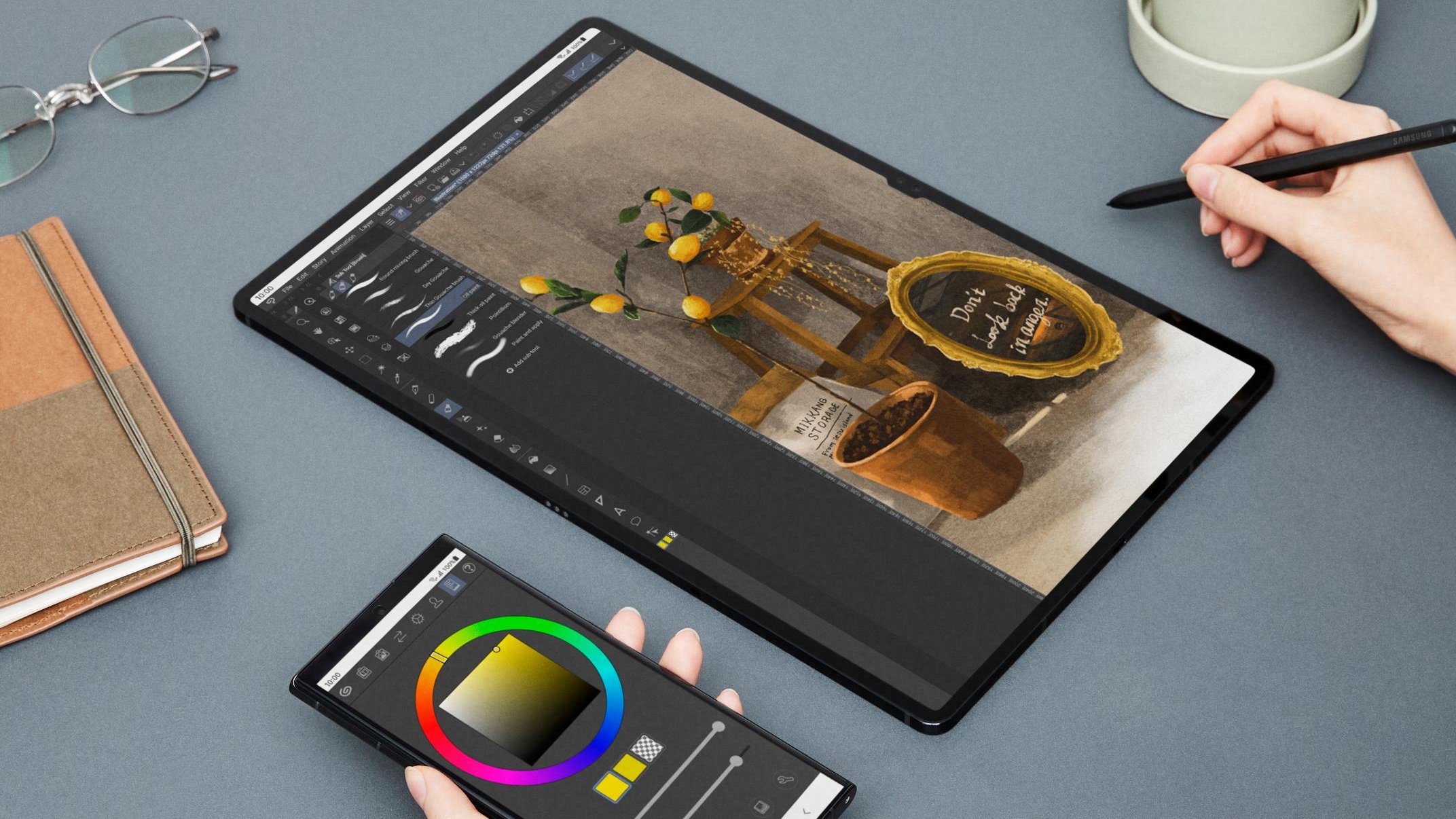
I’m not convinced that the Galaxy Tab S8 Ultra will outlast the iPad Pro (10,728 mAh battery), which, according to our test results, outputs 10 hours and 48 minutes of battery life. I suspect that the M1 chip is more power-efficient than the Qualcomm Snapdragon processor inside the Galaxy Tab S8 Ultra. Plus, the iPad Pro’s ProMotion, mini-LED screen makes it less of battery drain (compared to the Ultra’s non-adaptive, Super AMOLED panel).
My money is on the iPad Pro when it comes to battery life longevity.
Winner: iPad Pro
Outlook
We’re not size queens; sometimes it really is all about the motion in the ocean. The Galaxy Tab S8 Ultra may be larger and offer more screen real estate, but as it stands now, the iPad Pro knocked out its Android rival in four out of seven rounds. However, as mentioned, test results for the Galaxy Tab S8 Ultra are pending. We’ll update this page once we get benchmarks on the Android tablet’s display, performance, battery life, and more.
Last year, Samsung couldn’t snatch the tablet throne from Apple, but with the new Ultra tablet, there’s a good chance that the iPad may finally have a worthy opponent in the slate market.

